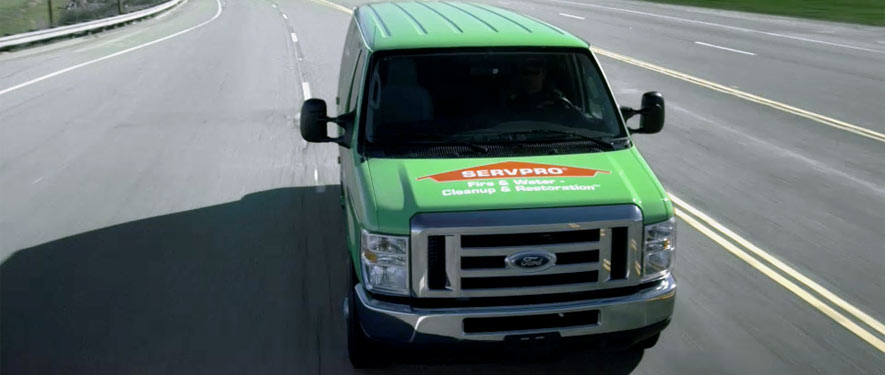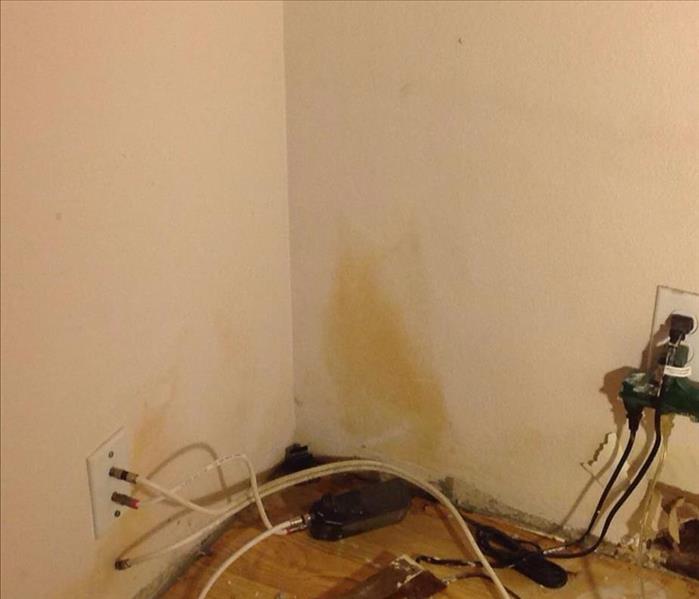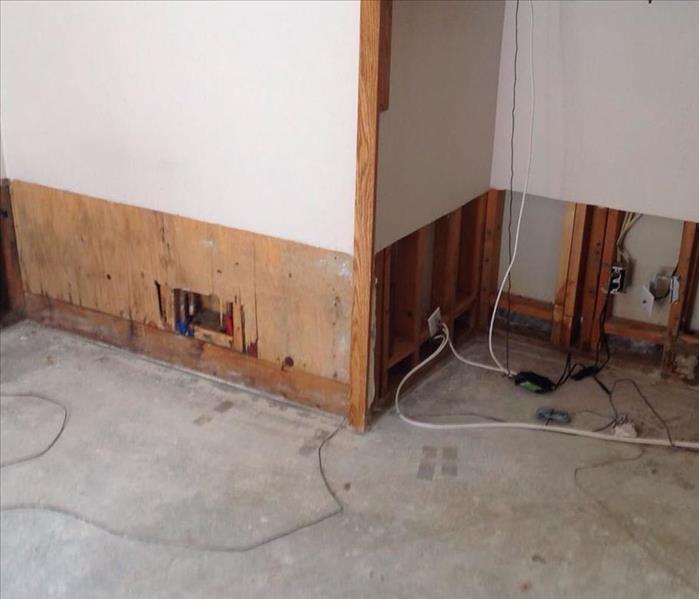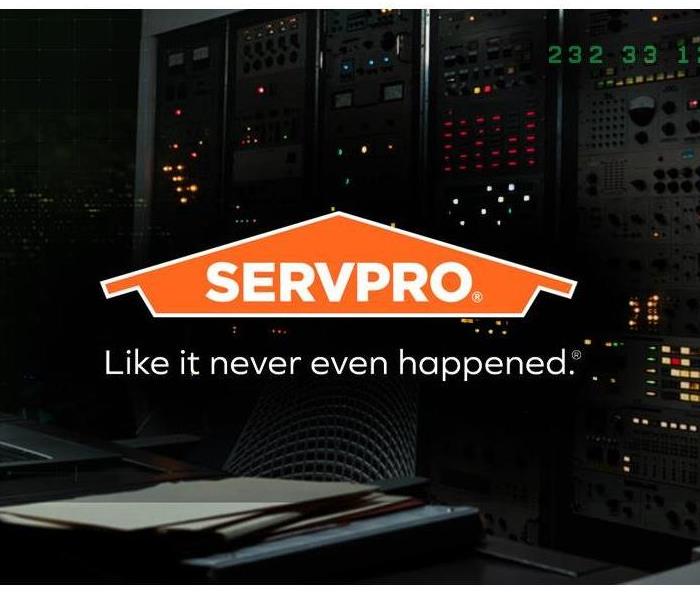
Santa Clarita, CA Mold Damage Remediation
Severe weather systems and moist conditions near the Santa Clara River can contribute to homes and businesses like the California Institute of the Arts (CalArts), College of the Canyons (COC), and The Master's University (TMU) throughout the Santa Clarita Valley experiencing mold and microbial threats. Many have come to depend on our experienced SERVPRO remediators when mold gets discovered because of our fast response and expertise.
Can Mold Inspections Benefit Damaged Homes?
Experienced professionals who can look over the damaged property before remediation focus on ensuring the most efficient path to returning a property to preloss condition. Remediators are among the most heavily trained on our roster, allowing us to provide qualified personnel for inspections quickly.
How Does Mold Removal Start in Santa Clarita Properties?
Clearing active mold from your home or business can involve several types of remediation strategies. Multiple removal tactics might be beneficial depending on the severity of the situation and the affected materials hosting the colonies. Ultimately, the remediation process involves several unique phases, including:
- Mold Removal
- Content Relocation and Cleaning
- Bathroom Mold Removal
- Odor Elimination
- Reconstruction
What Techniques Remove Musty Odors from Santa Clarita Homes?
One of the final obstacles of remediating mold damage in area homes is eliminating the musty odors that volatile organic compounds produced during the spread of mold organisms. There are multiple strategies for deodorization, including thermal fogging, ozone machines, and hydroxyl generators.
See our main page for more on mold remediation and damage repairs.
SERVPRO of Santa Clarita Valley
- 24-Hour Emergency Service
- Faster to Any Size Disaster
- Highly Trained Mold Remediation Technicians
- Specialized Mold Remediation Equipment
- A Trusted Leader in the Restoration Industry
- Locally Owned and Operated
If You See Signs of Mold, Call Us Today – (661) 296-4600
Understanding Mold
Microscopic mold spores exist almost everywhere, outdoors and indoors, making it impossible to remove all mold from a home or business. Some restoration businesses advertise “mold removal” and even guarantee to remove all mold, which is a fallacy. Consider the following mold facts:
- Mold is present almost everywhere, indoors and outdoors.
- Mold spores are microscopic and float along in the air, and may enter your home through windows, doors, or AC/heating systems or even hitch a ride indoors on your clothing or on a pet.
- Mold spores thrive on moisture. Mold spores can quickly grow into colonies when exposed to water. These colonies may produce allergens, irritants, and toxins.
- Before mold remediation can begin, any sources of water or moisture must be addressed. Otherwise, the mold may return.
- Mold often produces a strong, musty odor and can lead you to possible mold problem areas.
- Even higher-than-normal indoor humidity can support mold growth. Keep indoor humidity below 45 percent.
Faster to Any Size Disaster
Mold spreads quickly, so a minor mold infestation can quickly escalate into a major problem. We’re dedicated to responding immediately when you contact us. A fast response lessens the damage, limits further damage, and reduces cost.
Locally Owned, with National Resources
We are proud to be an active member of this community. SERVPRO of Santa Clarita Valley is locally owned and operated, so we’re already nearby and ready to help Santa Clarita residents and business owners with any size mold contamination.
We are proud to serve our local communities:
Highly Trained Water and Mold Restoration Specialists
We are trained mold damage specialists who get started quickly to get your home or business back to normal, with specific training and certifications to handle your restoration needs. Learn about our water and mold training and certificates.
The Mold Remediation Process
Every mold damage scenario is different and requires a unique solution, but the general mold remediation process stays the same. The steps listed below illustrate our “typical” process:
Step 1: Emergency Contact - (661) 296-4600
The mold cleanup and restoration process begins when you call us. Our representative will ask a series of questions to help us determine the necessary equipment, resources, and personnel.
Step 2: Inspection and Mold Damage Assessment
We carefully inspect your property for visible signs of mold. Mold feeds on cellulose and water and can be hidden from plain view. We use various technologies to detect mold and hidden water sources.
Step 3: Mold Containment
Our professionals use various containment procedures to prevent the spread of mold. We may use advanced containment procedures like negative air chambers to isolate the contaminated area with physical barriers and negative air pressure to keep the mold spores from spreading during the cleanup process. All fans and heating and cooling systems will be turned off to prevent the spread of mold.
Step 4: Air Filtration
Our specialized filtration equipment allows our professionals to capture microscopic mold spores out of the air. We utilize powerful “air scrubbers” and HEPA vacuums to prevent the spread of these mold spores while the mold remediation is in process.
Step 5: Removing Mold and Mold-Infested Materials
The mold remediation process depends on the amount of mold growth and the types of surfaces on which the mold appears. We’ll use antifungal and antimicrobial treatments to eliminate mold colonies and to help prevent new colonies from forming. It may be necessary to remove and dispose of mold-infested porous materials, like drywall and carpeting, to remediate heavy mold growth.
Step 6: Cleaning Contents and Sanitizing
We clean your furniture, decorative items, curtains, clothing, and other restorable items affected by mold, using a variety of cleaning techniques to clean and disinfect your belongings. We’re also trained to remove odors and provide deodorization using fogging equipment.
Step 7: Restoration
During the remediation process, it’s often necessary to remove porous building materials like subfloors, drywall, and carpet. The restoration step returns your Santa Clarita, CA home or business back to normal. Depending on the severity of mold damage, the restoration step may involve minor repairs, such as replacing drywall, or it may involve a substantial reconstruction project.
SERVPRO knows Mold
SERVPRO of Santa Clarita Valley has the expertise to make any mold problem a memory in Santa Clarita, CA. We have seen the distress homeowners experience upon finding mold at their property. SERVPRO can help calm any mold concerns. Our trained professionals have the equipment and knowledge it takes to properly remediate mold. Call (661) 296-4600 - We are ready and waiting to respond to your emergency.






 24/7 Emergency Service
24/7 Emergency Service



